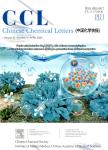Photoelectron imaging spectroscopic signatures of CO activation by the heterotrinuclear titanium-nickel clusters
作者机构:College of Chemistry and Chemical EngineeringXinyang Normal UniversityXinyang 464000China State Key Laboratory of Molecular Reaction DynamicsDalian Institute of Chemical PhysicsChinese Academy of SciencesDalian 116023China School of Life ScienceLudong UniversityYantai 264025China
出 版 物:《Chinese Chemical Letters》 (中国化学快报(英文版))
年 卷 期:2023年第34卷第6期
页 面:567-571页
核心收录:
学科分类:081704[工学-应用化学] 07[理学] 070304[理学-物理化学(含∶化学物理)] 08[工学] 0817[工学-化学工程与技术] 070302[理学-分析化学] 0703[理学-化学]
基 金:supported by the National Natural Science Foundation of China(Nos.21873097,22103082,92061203,22125303 and 22288201) the Youth Innovation Promotion Association of the Chinese Academy of Sciences(CAS,No.2020187) the Strategic Priority Research Program of CAS(No.XDB17000000)
主 题:CO activation Transition metal carbonyl Heteronuclear cluster Photoelectron imaging Quantum chemical calculations
摘 要:A series of heterotrinuclear Ti_(2)Ni(CO)_(n)^(-)(n=6-9)carbonyls have been generated via a laser vaporization supersonic cluster source and characterized by mass-selected photoelectron velocity-map imaging *** chemical calculations have been carried out to identify the structures and understand the experimental spectral *** results indicate that a building block of Ti-Ti-Ni-C four-membered ring with the C atom bonded to Ti,Ti,and Ni is dominated in the n=6-8 complexes,whereas a structural motif of Ti-Ti-Ni triangle core is preferred in n=*** complexes are found to be capable of simultaneously accommodating all the main modes of metal-CO coordination(i.e.,terminal,bridging,and side-on modes),where the corresponding mode points to the weak,moderate,high C-O bond activation,*** number of CO ligands for a specific bonding mode varies with the cluster *** findings have important implications for molecular-level understanding of the interaction of CO with alloy surfaces/interfaces and tuning the appropriate CO activation via the selection of different metals.



